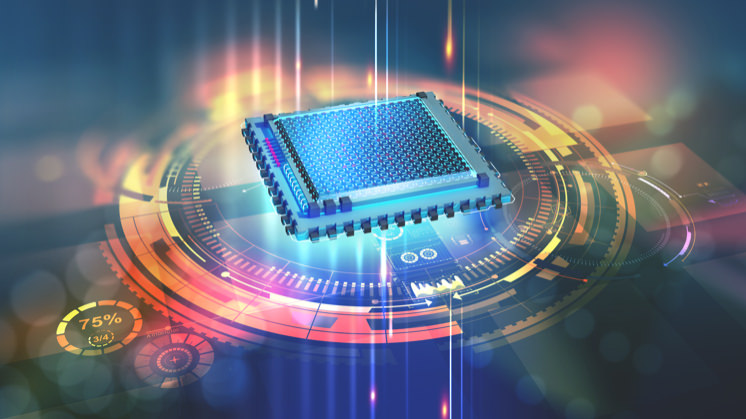Applications of nanotechnology
Nanotechnology: a small solution to big problems
Invisible particles that fight cancer cells, faster microprocessors that consume less energy, batteries that last 10 times longer or solar panels that yield twice as much energy. These are just some of the many applications of nanotechnology, a discipline with all the ingredients to turn into the next industrial revolution.

Nanotechnology and its microscopic universe offer gigantic possibilities for contemporary science and industry. This field, which flourished between the 60s and 80s, has surged in the last two decades with a booming global market whose value will exceed 125,000 million dollars in the next five years according to the Global Nanotechnology Market (by Component and Applications) report by Research & Markets which presents forecasts for 2024.
What is nanotechnology?
This technological branch manipulates the molecular structure of materials to change their intrinsic properties and obtain others with revolutionary applications. This is the case of graphene — modified carbon harder than steel, lighter than aluminium and almost transparent — or nanoparticles used in areas such as electronics, energy, biomedicine or defence.
In 1959 the American Nobel prize and physicist Richard Feynman was the first to speak about the applications of nanotechnology at the California Institute of Technology (Caltech). With the 21st century, this area consolidated, was marketed and came into its own. It includes other areas such as micro-manufacturing, organic chemistry and molecular biology. In the United States alone, for example, more than 18 billion dollars were invested between 2001 and 2013 through the NNI (National Nanotechnology Initiative) to turn this sector into a driver of economic growth and competitiveness.

 SEE INFOGRAPHIC: Nanotechnology, up close [PDF]External link, opens in new window.
SEE INFOGRAPHIC: Nanotechnology, up close [PDF]External link, opens in new window.
Types of nanotechnology
The different types of nanotechnology are classified according to how they proceed (top-down or bottom-up) and the medium in which they work (dry or wet):
- Descending (top-down)
Mechanisms and structures are miniaturised at the nanometric scale — from one to 100 nanometres in size —. It is the most frequent to date, especially in electronics.
-
Ascending (bottom-up)
You start with a nanometric structure — a molecule, for example — and through a mounting or self-assembly process you create a larger mechanism than the one you started with.
-
Dry nanotechnolgy
It is used to manufacture structures in coal, silicon, inorganic materials, metals and semiconductors that do not work with humidity.
- Wet nanotechnology
It is based on biological systems present in an aqueous environment — including genetic material, membranes, enzymes and other cellular components —.
EXAMPLES AND APPLICATIONS OF NANOTECHNOLGY
Nanotechnology and nanomaterials can be applied in all kinds of industrial sectors. They are usually found in these areas:
Electronics
Carbon nanotubes are close to replacing silicon as a material for making smaller, faster and more efficient microchips and devices, as well as lighter, more conductive and stronger quantum nanowires. Graphene's properties make it an ideal candidate for the development of flexible touchscreens.
Energy
A new semiconductor developed by Kyoto University makes it possible to manufacture solar panels that double the amount of sunlight converted into electricity. Nanotechnology also lowers costs, produces stronger and lighter wind turbines, improves fuel efficiency and, thanks to the thermal insulation of some nanocomponents, can save energy.
Biomedicine
The properties of some nanomaterials make them ideal for improving early diagnosis and treatment of neurodegenerative diseases or cancer. They are able to attack cancer cells selectively without harming other healthy cells. Some nanoparticles have also been used to enhance pharmaceutical products such as sunscreen.
Environment
Air purification with ions, wastewater purification with nanobubbles or nanofiltration systems for heavy metals are some of its environmentally-friendly applications. Nanocatalysts are also available to make chemical reactions more efficient and less polluting.
Food
In this field, nanobiosensors could be used to detect the presence of pathogens in food or nanocomposites to improve food production by increasing mechanical and thermal resistance and decreasing oxygen transfer in packaged products.
Textile
Nanotechnology makes it possible to develop smart fabrics that don't stain nor wrinkle, as well as stronger, lighter and more durable materials to make motorcycle helmets or sports equipment.
Nanotechnology in the future
There are bright and dark spots in the future of nanotechnology. On the one hand, the sector is expected to grow globally, driven by technological advances, increased government support, increased private investment and growing demand for smaller devices, to name a few. However, the environmental, health and safety risks of nanotechnology and concerns related to its commercialisation could hamper market expansion.
The United States, Brazil and Germany will lead the nanotechnology industry in 2024, with an important presence in the Top 15 Asian countries such as Japan, China, South Korea, India, Taiwan and Malaysia. The cosmetics sector will climb positions stealing third place from the biomedical sector in a ranking that will be led by electronics and energy, as it is now.
5G, welcome to the era of hyper-connectivity
Digital twins - the keys to the 4.0 Industrial Revolution
The benefits of 'Machine Learning'




